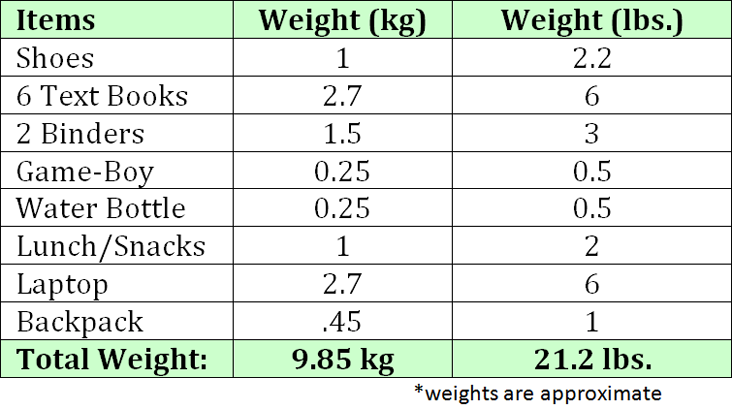Oh, no! My poor child has a fever! What should I do?
Nothing.
Wait, that sounds a little harsh. Of course you should do something.
First, congratulate your child for having such a wonderful immune system that takes such good care of him or her. Then, make sure he or she is dressed in light, comfortable pyjamas and send your child to bed to rest. Finally, make sure your child is well hydrated and provide light, easily digested food as requested by your little one. It is also a great time to be adjusted by the chiropractor to help support the immune system.
What about Tylenol, Advil, Ibuprofen…?
Leave them on the shelf. Newly published medical research confirms what chiropractors have been saying for years. A fever is the body’s way of fighting infections. If you lower the fever, you are giving the infection the upper hand. In fact, there is medical evidence that reducing a fever with medication will actually prolong an illness!
Most bacterial and viral infections thrive in a body temperature of 98.6oF (37oC). By raising the body’s temperature, your immune system is creating a hostile environment for the infection and the germs cannot survive. Why would you want to stop that useful process?
NEVER give a child or teenager with an infection Aspirin (acetylsalicylic acid – ASA). It has been associated with a potentially fatal disorder known as Reye’s Syndrome.
Aren’t fevers dangerous?
Rarely. Brain damage from fever generally will not occur unless the fever is over 107.6oF (42oC). Untreated fevers caused by infection will rarely go over 105oF (40.6oC) unless the child is overdressed or trapped in a hot place. Fevers usually resolve over 3 days.
What about Febrile Seizures?
These seizures do occur in some children. Most are over quickly, are neither a cause nor a sign of epilepsy and do not cause any permanent harm. They are the result of a child’s temperature rising quickly rather than a result of any particular temperature itself. Make sure the child is not over-dressed and that he or she is in a safe place until it passes. It is safe to apply cool compresses to the child’s neck, forehead and feet, to help stabilize the body temperature. Do have the child assessed by medical personnel to ensure the child is adequately hydrated and otherwise well.
When should I worry?
Medical emergencies are very rare. We tend to see any suffering by our families as agonizing and we are desperate to “do something”. Most of the time the best thing we can do to help is support our bodies in their wisdom and provide a calm, peaceful area to rest and restore. It is important, however, to recognize those situations that can be serious.
Call your doctor right away if you child:
- is younger than 3 months old and has a rectal temperature of 100.4oF (38oC) or higher
- is 3-12 months old and has a fever or 102.2oF (39oC) or higher
- is under 2 years old and has a fever that lasts longer than 48 hours
- is over 2 and has a fever for longer than 72 hours
- has been recently vaccinated
- has visited a third world country recently (including Cuba and Mexico)
- has immune system trouble (steroid therapy, transplant medication, spleen removed, HIV positive, or treated for cancer)
- has a new rash or new bruises appear
Call 911 if your child has a fever and:
- is crying and cannot be calmed
- cannot be wakened easily or at all
- seems confused
- cannot walk
- has trouble breathing
- has blue lips, tongue or nails
- has a very bad headache
- has a very stiff neck
- refuses to move an arm or leg
- has a seizure lasting 10 minutes or more
Remember, these cases are extremely rare. Trust your instincts; no one knows your child like you do and remember to trust in the body’s amazing ability to heal itself!
References:
Doran TF, DeAngelis C, Baumgardner RA, et al. Acetaminophen: more harm than good for chicken pox. J Pediatr 1989;114:1045-8.
Graham MH, Burrell CJ, Douglas RM, et al. Adverse effects of aspirin, acetaminophen, and ibuprofen on immune function, viral shedding, and clinical status in rhinovirus-infected volunteers. J Infect Dis 1990;162:1277-82.
Plaisance KI, Kudaravalli S, Wasserman SS, et al. Effect of Antipyretic Therapy on the Duration of Illness in Experimental Influenza A, Shigella sonnei, and Rickettsia rickettsii Infections. Pharmacotherapy. 2000;20(12).
Stanley ED, Jackson GG, Panusarn C, et al. Increased viral shedding with aspirin treatment of rhinovirus infection. JAMA 1975; 231:1248-51.



 This July, we were delighted to discover that our clinic had been voted Caledon’s number one choice in the Caledon Enterprise’s inaugural “Readers’ Choice Award”.
This July, we were delighted to discover that our clinic had been voted Caledon’s number one choice in the Caledon Enterprise’s inaugural “Readers’ Choice Award”.